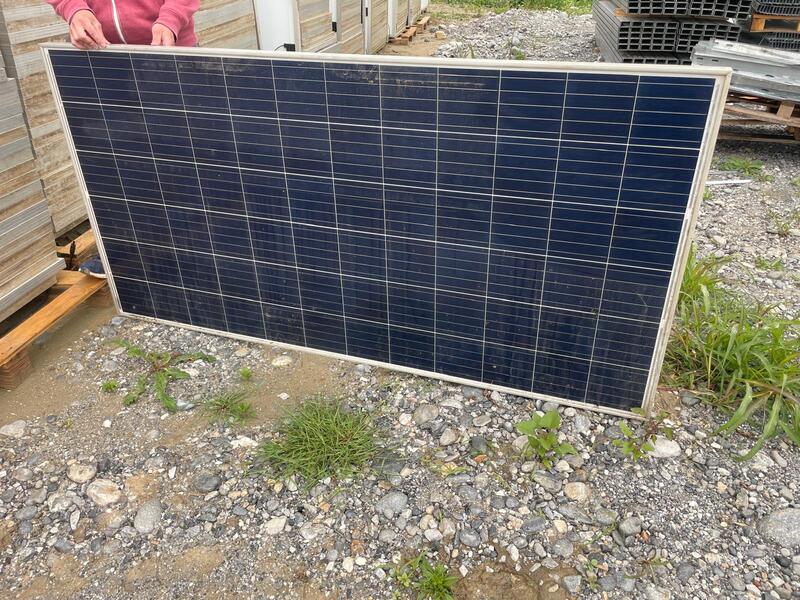Introduction
With the rising demand for renewable energy solutions, solar power has become an increasingly popular choice for homeowners, travelers, and outdoor enthusiasts. Among various solar panel options, the 100-watt solar panel stands out as a compact, efficient, and cost-effective choice for many applications. In this comprehensive guide, we will explore everything you need to know about solar power 100 watts, including their efficiency, benefits, common uses, and installation tips.
What is a 100-Watt Solar Panel?
A 100-watt solar panel is a photovoltaic (PV) panel designed to generate up to 100 watts of electricity under optimal sunlight conditions. These panels are usually made of monocrystalline or polycrystalline silicon cells, converting sunlight into direct current (DC) electricity.
Key Features of a 100-Watt Solar Panel
- Compact and lightweight: Typically measuring around 40 x 20 inches, they are easy to transport and install.
- Versatile usage: Suitable for RVs, boats, camping, and small off-grid systems.
- Durability: Many models come with weather-resistant designs for outdoor use.
- High efficiency: Some premium models offer efficiency rates above 20%.
Benefits of Using a 100-Watt Solar Panel
Investing in a 100-watt solar panel comes with numerous advantages, making it an ideal choice for various energy needs. Here are some of the primary benefits:
1. Eco-Friendly Energy Source
Solar panels harness sunlight, a renewable and sustainable energy source, reducing dependence on fossil fuels and minimizing carbon footprints.
2. Cost-Effective Solution
Although the initial investment may vary, using solar energy can significantly lower electricity bills, especially for remote applications.
3. Portability and Convenience
Many 100-watt solar panels are designed for easy transport and installation, making them perfect for outdoor enthusiasts, campers, and RV owners.
4. Reliable Off-Grid Power Supply
For those living or traveling in remote areas, a 100-watt solar panel provides a dependable source of electricity to charge batteries and run essential devices.
5. Low Maintenance Requirements
Solar panels have no moving parts, reducing the likelihood of breakdowns. Occasional cleaning and proper positioning ensure optimal performance.
Common Applications of 100-Watt Solar Panels
The versatility of 100-watt solar panels allows them to be used in various scenarios, including:
1. Camping and Outdoor Adventures
Many campers and hikers use 100-watt solar panels to charge their phones, laptops, and portable power stations while exploring the outdoors.
2. RVs and Boats
RVers and boat owners install solar panels to run essential appliances like lights, fans, and small refrigerators without relying on generators or shore power.
3. Backup Power for Homes
In case of power outages, a 100-watt solar panel can provide emergency power to charge small electronic devices.
4. Small Off-Grid Systems
Remote cabins, garden sheds, and tiny homes can benefit from a 100-watt solar system to run lights and basic electronics.
5. Agricultural and Industrial Uses
Some farmers use solar panels to power water pumps, electric fences, and monitoring equipment in rural settings.
How Much Power Does a 100-Watt Solar Panel Generate?
The power output of a 100-watt solar panel depends on various factors such as sunlight exposure, weather conditions, and panel orientation. Under optimal conditions, it generates approximately:
- 100 watts per hour of peak sunlight (usually around 5 hours daily in sunny regions)
- 500 watt-hours (0.5 kWh) per day in ideal conditions
- 15 kWh per month (on average)
However, efficiency losses due to shading, dust, and wiring should be considered.
What Can a 100-Watt Solar Panel Power?
A single 100-watt solar panel can power several small devices. Here’s a rough estimate of what it can run:
- LED lights (10W) – 10 hours
- Laptop (50W) – 2 hours
- Smartphone charger (5W) – 100 charges
- Small fan (30W) – 3-4 hours
- Mini refrigerator (60W) – Short periods with battery backup
For continuous use of high-power appliances, multiple panels and a battery storage system are recommended.
How to Install a 100-Watt Solar Panel
Installing a 100-watt solar panel is relatively simple. Follow these steps for a successful setup:
1. Choose the Right Location
Select a spot with maximum sunlight exposure, such as a rooftop, RV roof, or open ground.
2. Mount the Panel Securely
Use brackets, stands, or mounting hardware to position the panel at an optimal angle (typically 30-45 degrees depending on latitude).
3. Connect to a Charge Controller
A charge controller regulates voltage and prevents battery overcharging when connected to a battery system.
4. Connect to a Battery (If Required)
For off-grid applications, connect the charge controller to a 12V battery to store solar energy for later use.
5. Connect to an Inverter (For AC Devices)
If you need to run AC appliances, use an inverter to convert DC power from the battery into AC electricity.
6. Test the System
Check voltage levels and ensure all connections are secure before regular use.
Choosing the Best 100-Watt Solar Panel
When buying a 100-watt solar panel, consider the following factors:
- Panel type: Monocrystalline panels offer higher efficiency than polycrystalline ones.
- Portability: Foldable and lightweight designs are ideal for travelers.
- Durability: Look for weatherproof materials and warranties.
- Included Accessories: Some kits come with charge controllers, mounting brackets, and cables.
Conclusion
A 100-watt solar panel is a practical and versatile solution for various power needs, whether for outdoor adventures, RVs, or off-grid living. With its eco-friendly nature, cost-effectiveness, and ease of use, it’s an excellent investment for anyone looking to harness solar energy. By understanding its capabilities, applications, and installation process, you can make the most out of this sustainable energy source. Start your solar journey today and enjoy the benefits of clean, renewable power!


